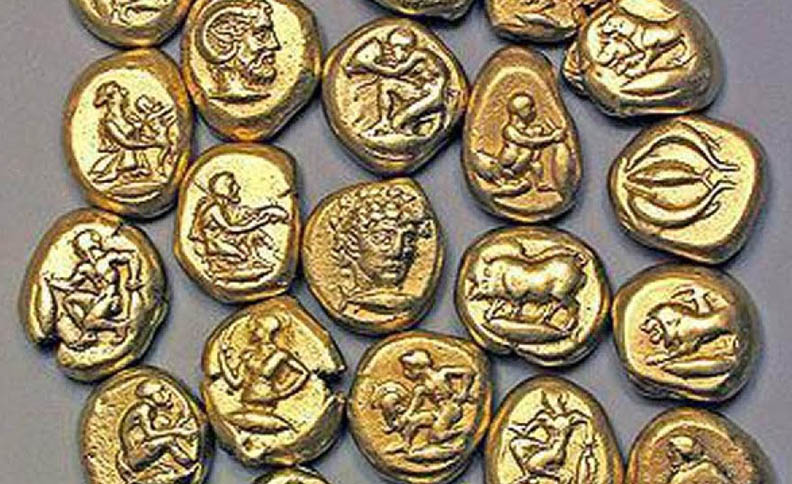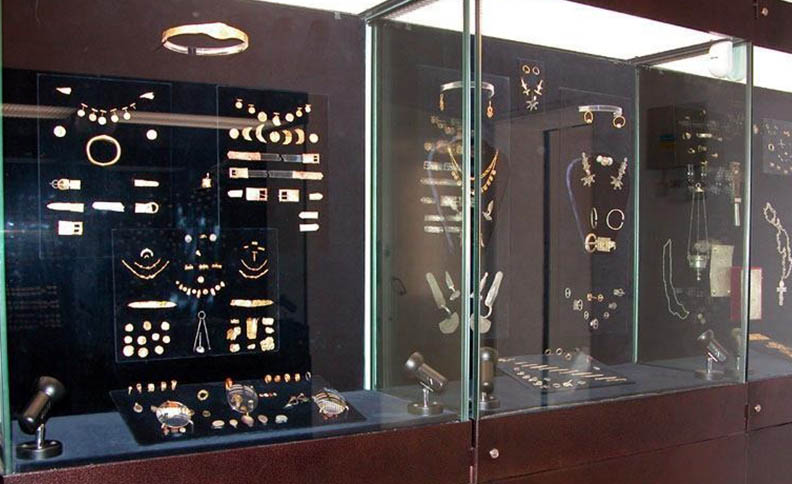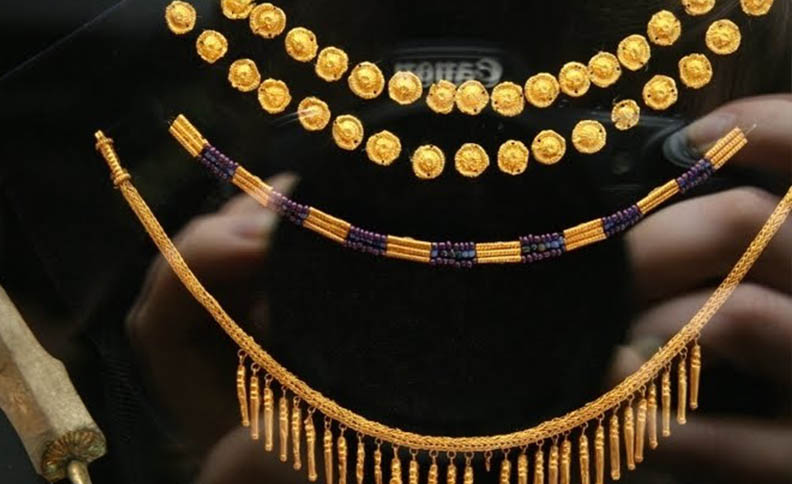The Golden storeroom is an interesting collection of ancient gold and gold products that was found on the territory of the Crimea. In these places, fruitful archaeological research and many exhibits have long been conducted, but until recently, the finds were stored either in the Hermitage and other museums or transferred to the Bank for security purposes.
In 2005, in Crimea, in the Kerch historical reserve created its own gold storeroom. The jewels that archaeologists have found here since the 1970s were moved to a small, specially equipped room in the Museum building, and placed in glass cases that are securely protected by an alarm system.
Among the exhibits is a treasure trove of 99 coins found on the territory of the Kerch Peninsula. There are early panticapean coins, coins of the period of Mithridates VI Eupator, Alexander the great, coins of the Bosporan Kingdom. A hoard of silver coins from Mengli Giray, the ruler of the Crimean khanate, found near the village of Dzhankoy in 1967, is also stored here. There are also weapons and, of course, Bosporan jewelry, the oldest of which belong to the 4th century BC.
The Kerch Gold storeroom presents Scythian-Greek jewellery of the 4th-5th centuries. Jewellery workshops of Bosporus made jewellery for the Scythian nobility in the animal style, which intertwined the traditions of Scythian and Greek art. One of the most famous exhibits of the Museum is a Golden hryvnia with the endings in the form of lions ‘ heads. Here you can also see jewellery: patch plaques, earrings, rings, amulets. In those distant times, local jewellers decorated jewellery inserts of precious and semiprecious stones. Among the early ornaments in the inlaid style, the Museum keeps an amulet, a belt buckle, a badge from a set of horse harnesses, and a fibula Dating from the third century BC.
A common type of jewellery, wreaths of gold leaves are often found in burials. But their use was more widespread. Inventories of ancient temples and shrines contain references to wreaths of various weights-they were donated to the temples by ordinary citizens, officials who completed public service, and also brought as a gift on behalf of the state, including from foreign rulers. According to the testimony of Demosthenes such wreaths were worn during the festive procession, they served as prizes in competitions.
Gemstones and metal rings appeared in the Crimea along with migrants from ancient Mediterranean centers. In the Kerch region, both imported rings and gemstones are found, as well as those carved in local workshops. Among the stones used, the most popular was polished garnet and other red stones. In ancient times, people believed in the magic of stones, it was believed that stones help women and their bosses to see prophetic dreams, protect them from evil and cure various diseases.
Among the interesting exhibits of the Museum is a burial complex of the 5th-6th centuries, found in 1976: among the finds are two clay fibulae with glass inserts, two gold pendants with inserts of dark red glass, silver bracelets, an eagle-headed buckle, and beads.
The exhibition ends with finds from excavations of different years, which were from the area near the Church of John the Baptist in the Crimea. There are gold and silver temple rings, buttons in the form of bells, crosses, rings.
The Golden storeroom demonstrates the level of development of jewellery art in the ancient Kingdom of Bosporus and in the medieval Korchev.
Every year, the collection of precious metal products is updated with new exhibits found, including in the course of underwater archaeological research.
Location : Crimea
Visit the grand locations like The Golden Room in Kerch and loads more that Russia has to offer!
Contact us @ Russian Info Center to Book Russia Tour
Choose from flights ex Delhi, Mumbai & Calcutta
Fill the form below and we’ll get back to you right away!




